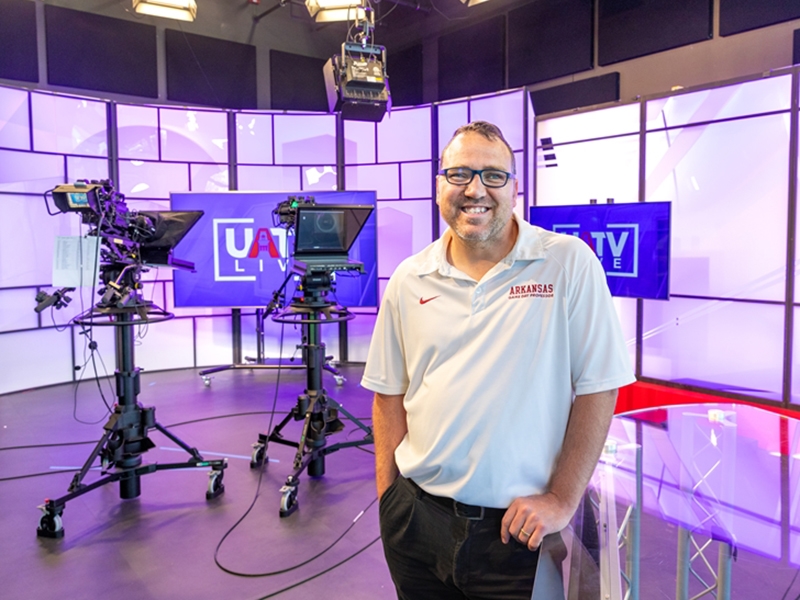
Anyone who regularly watches news or sports has likely noticed the steady creep of content competing for screen space, whether it be stock market prices, social media posts, game scores or some other graphic display. Previous studies have indicated that high intensity visuals that employ vibrant displays of information tend to hamper both long- and short-term memory.
With that in mind, a new study set out to answer a narrower question: how does the inclusion of social media in the televised presidential primary debates impact the viewer’s experience?
If the purpose of primary debates is to help viewers differentiate between candidates they would like to see lead their party in a national election, then the answer is that including social media in debates is undermining that process and reducing confidence in their party’s candidate.
That was the finding of a paper recently published in the Journal of Visual Political Communications by a multidisciplinary team of researchers, most of whom are affiliated with the University of Arkansas. The paper, titled “Visual Overload: The influence of broadcast social media visuals on televised debate viewing,” included faculty and former graduate students from the departments of Communication, Journalism and Political Science.
The researchers primarily focused on the 2015-2016 primary debates in which the televised screen showed a live Twitter feed on the right side of the screen, often featuring disputatious posts from candidates of the opposing party, as well as a trend line at the bottom of the screen highlighting which candidate was being most tweeted about.
The researchers then did content analysis, which took into account things like the number of tweets featured, time each tweet was on the screen and the number of followers the account holder had. This analysis was combined with visual tracking, in which 116 participants were presented with a clip from the primary debates to evaluate which area their attention was drawn to and for how long.
Ultimately, after sifting through this data, the researchers were able to make three determinations:
1. Competing visual stimuli may distract viewers from what is being said, hindering learning outcomes.
2. Counterarguments and negative information (in the form of tweets disputing what candidates were saying in the live debates) could influence how and to what extent viewers attend to candidate messages, thus affecting their persuasiveness.
3. Partisan social identities are activated, heightening competition between the parties and increasing affective polarization in the electorate.
Finally, the authors commented that “During the CBS debates from 2015 and 2016, social media visuals distracted, undermined knowledge acquisition and policy support for Democratic candidates and widened the affective gap between the left and the right.”
The authors weren’t certain why there were stronger effects associated with the Democratic debates. They speculated that “Republican Party candidates used Twitter more effectively to gain publicity during the Democratic Party debate, while Democratic candidates, along with politicians and political actors in general, were less likely to appear during the Republican Party debate.”
But what benefits one party one election can swing the other way the next. As such, the authors recommended simplifying the way in which debates are presented visually to ensure greater cognitive elaboration by the viewers and voters.
“A successful democracy necessitates an informed electorate that is willing to deliberate political issues with people that hold different opinions,” said Freddie J. Jennings, first author on the article and a teaching assistant professor in the Department of Communications. “We, as a society, need to find ways to build political knowledge, foster perspective taking and reduce polarization. Past research has shown that televised debates have the power to do this. The inclusion of additional information on screen, including live counterarguments via social media, undermines many of the benefits of televised debates.”
In addition to Jennings, authors included Brandon Bouchillon, an associate professor in the School of Journalism and Strategic Media at the U of A; Josh C. Bramlett, an assistant professor in the Department of Advertising and Public Relations at the University of Alabama; Austin D. Eubanks, a CTE research analytics programmer for the Office of Innovation for Education (OIE) at the U of A; Patrick Stewart, a professor of political science at the U of A; and Jason M. Miller, assistant professor of psychological science at the University of North Georgia.
About the University of Arkansas: As Arkansas' flagship institution, the U of A provides an internationally competitive education in more than 200 academic programs. Founded in 1871, the U of A contributes more than $2.2 billion to Arkansas’ economy through the teaching of new knowledge and skills, entrepreneurship and job development, discovery through research and creative activity while also providing training for professional disciplines. The Carnegie Foundation classifies the U of A among the few U.S. colleges and universities with the highest level of research activity. U.S. News & World Report ranks the U of A among the top public universities in the nation. See how the U of A works to build a better world at Arkansas Research and Economic Development News.
Topics
Contacts
Fred J. Jennings, teaching assistant professor
Dept. of Communications
417-389-6970, fjjenni@uark.edu
Hardin Young, assistant director for research communications
University Relations
479-575-6850, hyoung@uark.edu?